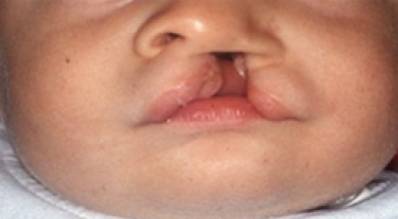Congenital facial malformations that impair the development of the upper lip and roof of the mouth are cleft lip and cleft palate. This article will cover the causes, identification, prognosis, available treatments, and conclusion for various birth abnormalities.
We provide a comprehensive overview of cleft lip and cleft palate, including information on their causes, diagnosis, treatment options, and prognosis. By reading this article, users can gain a better understanding of these congenital facial malformations and the various ways in which they can be addressed. Whether you are a healthcare professional, a parent of a child with a cleft lip or palate, or simply interested in learning more about this topic, this article is a valuable resource.
Causes
It is unknown what specifically causes cleft lip and cleft palate. Nonetheless, it is thought to entail a mix of genetic and environmental variables throughout pregnancy. Maternal smoking, alcohol use, the use of certain drugs during pregnancy, and exposure to chemicals in the environment are a few potential causes of cleft lip and palate. Additionally, some studies suggest that certain vitamin deficiencies during pregnancy may also increase the risk of cleft lip and palate in babies. However, more research is needed to fully understand the complex causes of this condition.
Diagnosis
During pregnancy or soon after birth, ultrasonography is frequently used to detect cleft lips. Although cleft palate can be found during a physical check after delivery, ultrasound detection of the condition may be more difficult. For a more certain diagnosis, further imaging tests like X-rays or MRIs may be necessary in some circumstances. It is important to diagnose cleft palate early on as it can affect feeding, speech development, and overall health. Treatment typically involves surgery and ongoing therapy.
Treatment
The restoration of the facial features is often done in several rounds of reconstructive surgery as part of the treatment for cleft lip and cleft palate. The initial operation is often performed between 9 and 18 months of age for cleft palate repair and within the first few months of life for cleft lip repair. As the kid develops, more operations could be required to address functional problems like speech or dental disorders.
Children with these issues also frequently need continuing assistance from a multidisciplinary team that includes speech therapists, orthodontists, audiologists, and other experts.
It is important for parents to be aware of these potential issues and seek out early intervention if they suspect their child may be experiencing difficulties. With the right support, many of these challenges can be successfully addressed, allowing the child to thrive and reach their full potential.
Prognosis
Most kids with cleft lip and cleft palate can regain their natural facial structure and look with the right care. Therefore, comprehensive treatment is essential to address concomitant difficulties such as food issues, speech problems, dental problems, and possibly psychological difficulties resulting from stigma or self-esteem issues. Positive long-term effects greatly benefit from early intervention.
For example, a child with a cleft palate may have difficulty with feeding and speech, requiring multiple surgeries and ongoing therapy with a team of specialists. Without early intervention, the child may experience delays in development and struggle with social interactions due to communication difficulties. However, with comprehensive treatment, the child can overcome these challenges and lead a fulfilling life.
Conclusion
- The role of early intervention in managing cleft lip and cleft palate
- How a multidisciplinary team approach helps in the comprehensive treatment of children with these conditions
- Understanding the genetic and environmental factors that contribute to cleft lip and cleft palate
- Exploring the challenges faced by children with these conditions when it comes to social interactions, self-esteem, etc., and how these can be addressed through therapy or counseling.
- Examining recent advancements in surgical techniques
